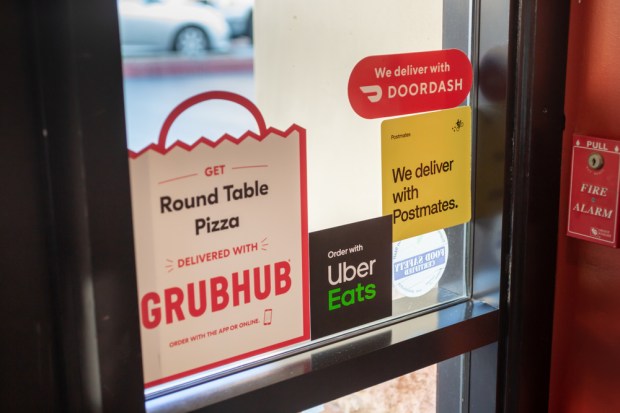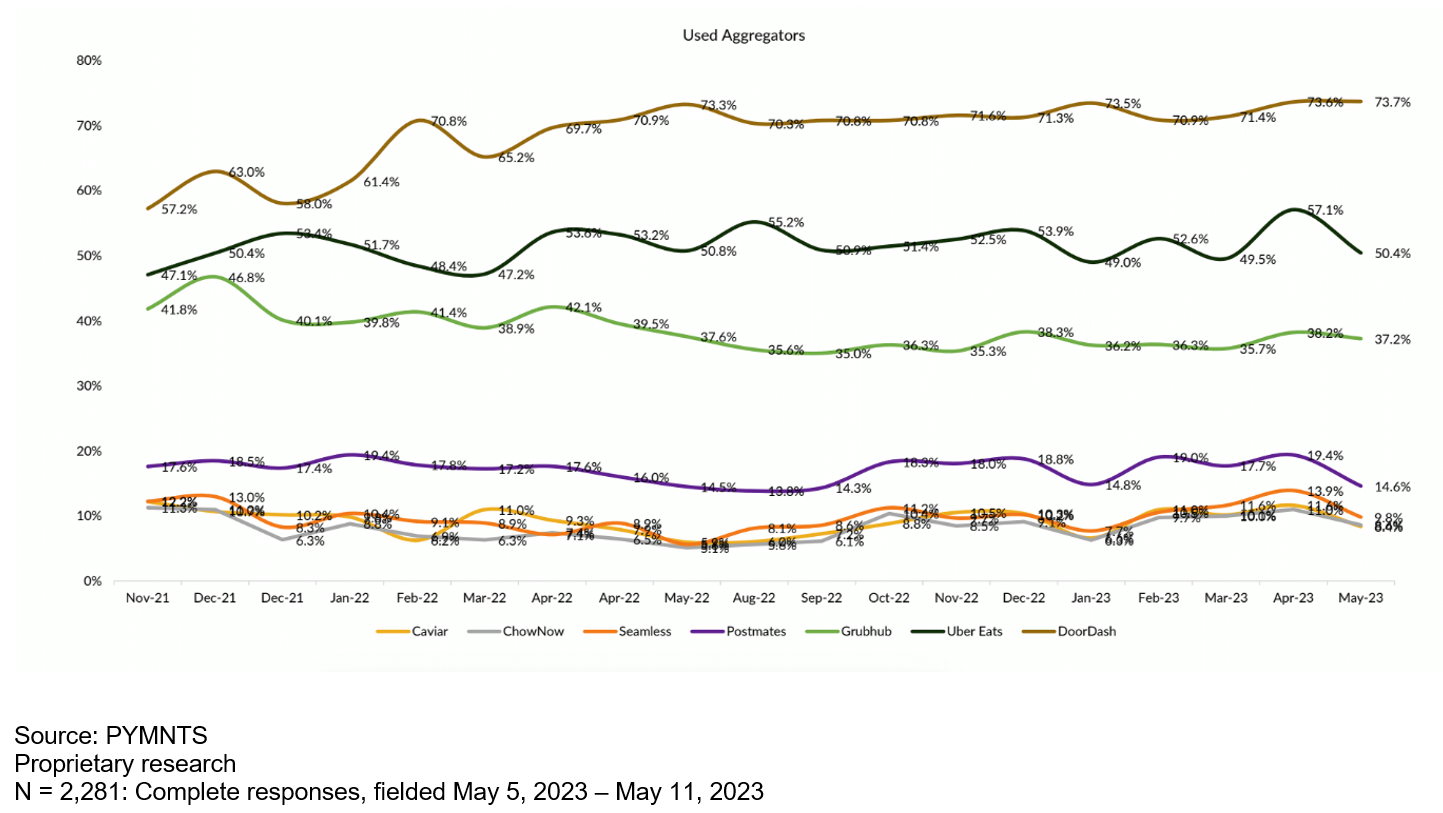DoorDash Beats Out Uber Eats and Grubhub in Food Delivery Race

Much like other highly competitive sectors, the aggregator market is dominated by the top three leaders and then the rest when it comes to usage. A closer look, however, reveals that over the past year, the three leaders — DoorDash, Uber Eats and Grubhub — have settled into a clear first, second and third place, in that order. The share of aggregator users that have utilized each was recently illustrated in proprietary research created for PYMNTS’ June “Connected Dining: Word of Mouth in the Digital Age” report.

As the chart noted, DoorDash, Uber Eats and Grubhub far outpace other sector players’ consumer usage rates, and they have for quite some time. DoorDash holds a 74% usage rate among consumers and has held above 70% since late April 2022. Although Uber Eats was within 10 percentage points of first place at the beginning of our data set, that gulf has widened to a more consistent 20 percentage points, hovering around 50%, albeit with volatility. Grubhub rounds out the sector leaders but has settled around 37%.
Uber Eats’ usage rates are particularly volatile, with a dramatic rise from March to April being essentially wiped out after slipping seven percentage points between April and May, despite a push toward expanded grocery delivery. If Uber Eats experiences similar drops over the next few months, the platform’s usage rates will more resemble fourth-place Postmates than second-place Grubhub. Uber Eats’ current slipping usage, despite the strength of its parent company, is a testament to how difficult it is to find a firm footing in the sector.
Both DoorDash and Grubhub have employed aggressive growth strategies to attain these higher user shares. Seemingly taking the approach of attempting to answer the needs of every demographic, DoorDash is appealing to affordability-seeking middle-income earners and others through its subscription-based flat fee for deliveries, DashPass. The aggregator is also penetrating the underserved lower-earning market through discounts and its rollout of accepting SNAP EBT payments in June.
DoorDash has grown its appeal with high earners as well through its diversification strategy of delivering nearly everything, expanding its non-food presence with same-day delivery of items from partnered retailers. All this and a pledge not to raise fees may explain why the platform consistently has the greatest use rates.
Grubhub has seemingly found its niche in the aggregator sector through corporate partnerships. In March, the platform announced an alliance with Transact Campus, a FinTech whose marketplace app offers digital payment solutions for colleges and universities. The partnership allows students to pay for meals with their campus cards, as well as tuition and housing.
The aggregator has also partnered with Homewood Suites by Hilton to go after the extended-stay hospitality market, where guests at hotels without restaurants can opt to order from their rooms through Grubhub. Guests also receive one-month trials of the Grubhub+ subscription program, similar to DashPass. And, since last summer, Grubhub has partnered with Amazon to offer its Prime members a free year of Grubhub+. However, these strategic alliances do not appear to be helping Grubhub find long-term loyalty growth, as it has not demonstrated consistent growth recently.
The dust appears to have settled. DoorDash’s consumer popularity due to its direct appeal to multiple demographics has helped it emerge as a consumer favorite. Neither Uber Eats, nor Grubhub seems to be making up any ground, meaning that if current trends continue, the market may be set — and not have room for any other players.

